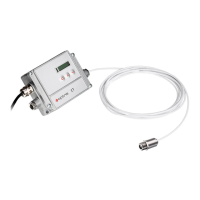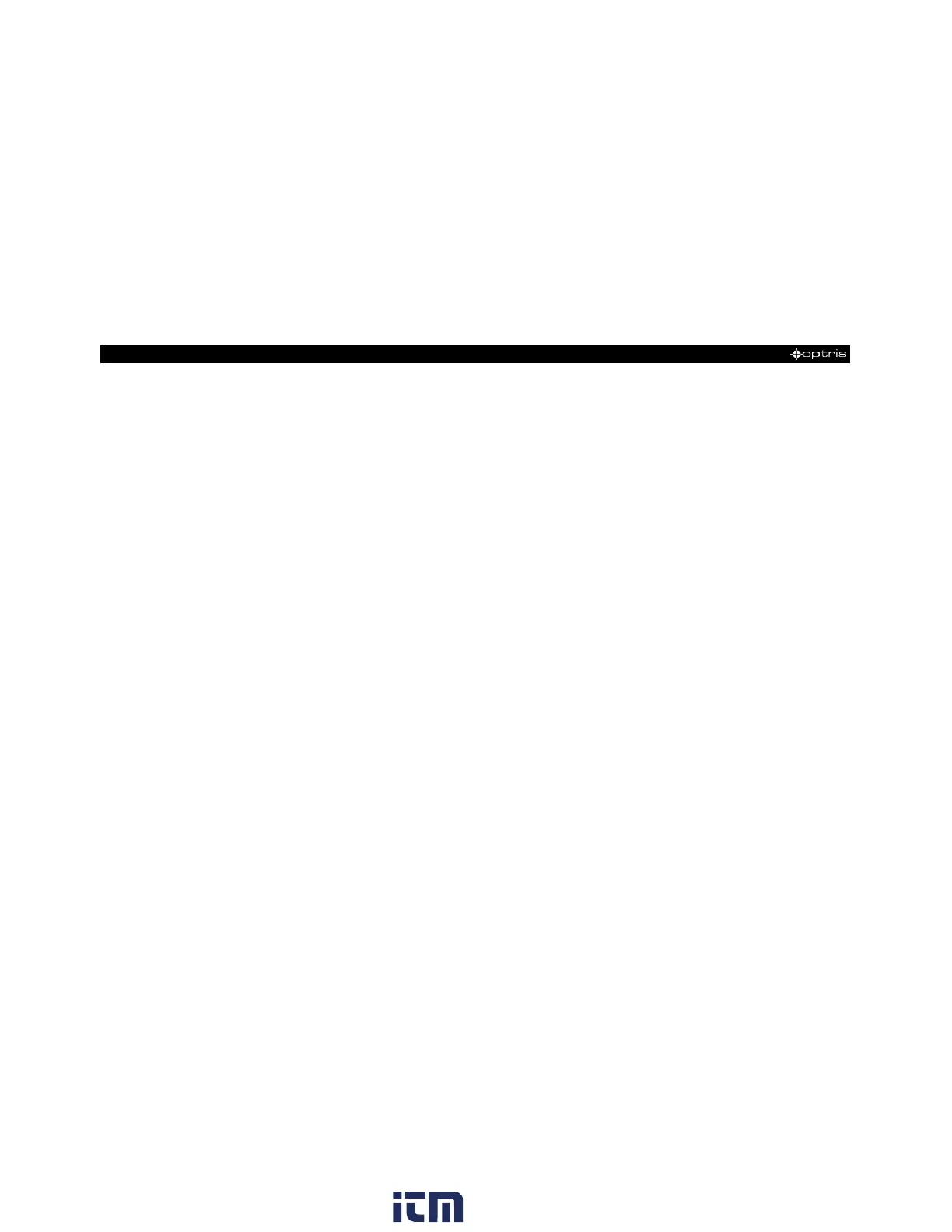-94 -
and take the temperature of the sticker. Afterwards, determine the temperature of the adjacent area on
the measuring object and adjust the emissivity according to the value of the temperature of the sticker.
► Cove a part of the surface of the measuring object with a black, flat paint with an emissivity of 0,98. Adjust
the emissivity of your infrared thermometer to 0,98 and take the temperature of the colored surface.
Afterwards, determine the temperature of a directly adjacent area and modify the emissivity until the
measured value corresponds to the temperature of the colored surface.
CAUTION: On all three methods the object temperature must be different from ambient temperature.
10.3 Characteristic Emissivity
In case none of the methods mentioned above help to determine the emissivity you may use the emissivity
tables ►Appendix A – Table of Emissivity for metals and Appendix B – Table of Emissivity for non-
metals. These are average values, only. The actual emissivity of a material depends on the following factors:
▪ temperature
▪ measuring angle
▪ geometry of the surface
▪ thickness of the material
▪ constitution of the surface (polished, oxidized, rough, sandblast)
▪ spectral range of the measurement
▪ transmissivity (e.g. with thin films)

